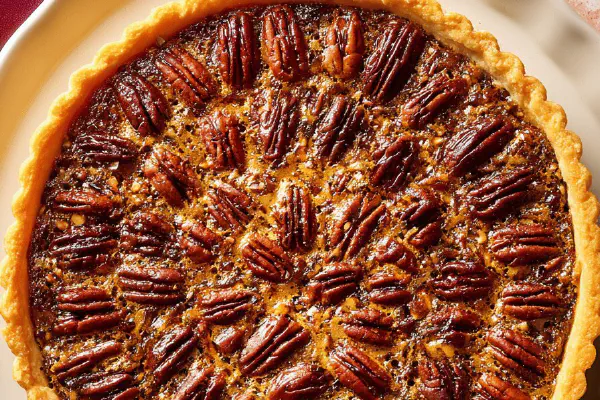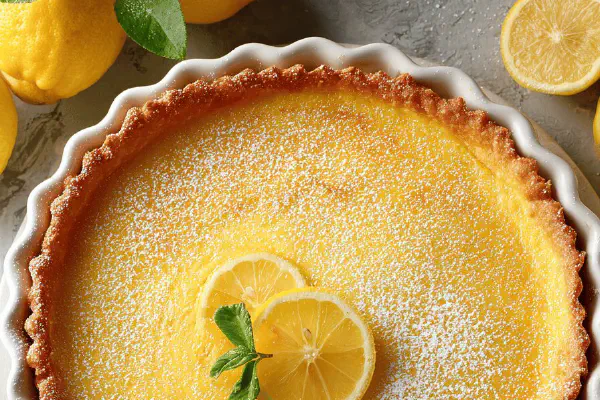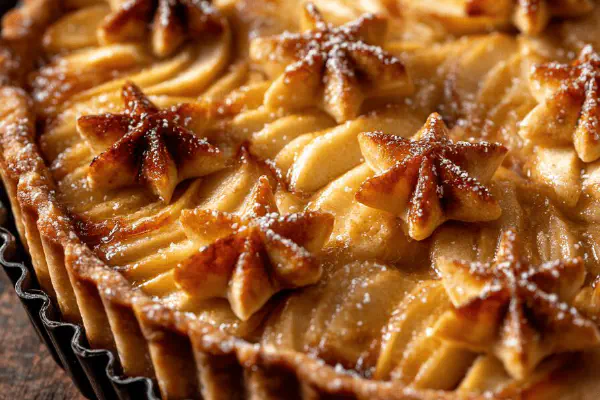Featured Recipe
Strawberry Foldover Tart

By Kate
"
A rustic foldover tart with a bright strawberry filling thickened with arrowroot instead of cornstarch. The crust swaps out some flour for whole wheat pastry flour for nuttier depth. A splash of lemon juice brightens the berries. Quick to assemble, baked high for golden, flaky edges. Finished with a sharp lime glaze rather than simple sugar icing. This tart holds its shape well and offers a balance of tender crust and juicy, thickened fruit. The berry filling bubbles and thickens, signaling readiness. Ideal for home bakers wanting a straightforward, no-fuss dessert with a slight twist on classic strawberry chausson.
"
Prep:
45 min
Cook:
35 min
Total:
Serves:
10 servings
dessert
tart
strawberries
baking
Introduction
Frozen strawberries save time but expect water release on thawing. Thickening needs arrowroot over cornstarch for clearer, less gummy finish—less is more here. Whole wheat pastry flour adds slight nuttiness and stronger dough structure without toughness. Vinegar plus buttermilk acids activate baking powder better. Rolling dough chilled keeps butter bits intact for flaky layers—not a paste. Long slits vent steam and prevent soggy top. Sugar sprinkling caramelizes into a crunchy top. Lime juice glaze cuts sweetness with a fresh finish. Timing flexible; cues matter more—the dough’s look, filling’s bubble, the crust’s smell. Chill filling, dough, chills keep everything measured. Expect some cracks, rustic look. Slice carefully. Storage needs care to avoid sogginess. Ready for some classic French skill with a twist.
Ingredients
Filling
- 450 g (3 cups) frozen sliced strawberries, thawed and drained
- 140 g (2/3 cup) granulated sugar
- 20 g (2 tbsp) arrowroot powder
- 15 ml (1 tbsp) fresh lemon juice
- 185 g (1 1/4 cups) unbleached all-purpose flour
- 80 g (2/3 cup) whole wheat pastry flour
- 3 ml (1/2 tsp) baking powder
- 1 ml (1/4 tsp) fine sea salt
- 160 g (2/3 cup) cold unsalted butter, diced
- 100 ml (6 1/2 tbsp) cold buttermilk
- 10 ml (2 tsp) white vinegar
- Lactose-free milk or cream, for brushing
- Coarse sugar, for sprinkling
- 50 g (1/3 cup) powdered sugar
- 15 ml (1 tbsp) fresh lime juice
Crust
Glaze
About the ingredients
Frozen fruit defrosted fully and drained avoids watery mess but don’t squeeze or juice too much, need body. Arrowroot yields clear, shiny filling, less pasty than cornstarch, works best with acid like lemon for thickening. Substitutions: use tapioca starch if arrowroot unavailable. Whole wheat pastry flour up to 30% adds flavor, strength; avoid straight whole wheat flour or will toughen. Buttermilk vinegar mix acidify batter activating baking powder; if unavailable, yogurt or lemon juice works but adjust quantity for dough hydration. Butter must be very cold, cut size of peas; melted butter ruins flakiness. Milk brushing encourages golden hue and seals dough edges; cream richer but prone to burning – watch oven. Glaze lime juice swaps out water, adds zing. Sugar on top gives crunch, but can burn easily if oven is too hot—watch closely.
Method
Preheat & Prepare
- Center rack. Oven to 210 °C (410 °F). Line baking sheet with parchment. Cold butter is key — keep it chilled until mixed.
- Combine strawberries, sugar, arrowroot, and lemon juice in a saucepan. Stir constantly over medium heat. Mixture thickens and bubbles with a glossy sheen. Taste for balance - more lemon cuts sweetness if dull. Off heat, cover with plastic touching surface. Chill 45 minutes; filling cool but not frozen.
- Pulse flours, baking powder, salt in food processor. Add butter cubes, pulse short bursts till peas-sized lumps remain. Mix buttermilk and vinegar, add gradually while pulsing. Dough just comes together — avoid overmixing or it gets tough.
- Flour counter well. Divide dough into 2 parts: one twice as big. Roll larger to 27 cm (10.5 in) square, smaller 20 cm (8 in). Chill both 15 minutes to firm up and prevent shrink.
- Press larger dough into 20 cm (8 in) square metal pan, sides about 3/4 height. Trim edges flush, no gaps.
- Spread filling leaving 1 cm border. Brush border with milk or cream for seal.
- Score long slashes in smaller dough on cut sides to vent steam. Carefully lift and cover filling. Crimp edges firmly to lock. Brush top with milk. Sprinkle coarse sugar evenly.
- Slide onto oven rack. At ~32 minutes, crust golden, listen for subtle crackle of crisping edges, bottom browned but not burnt. If bottom feels soft when lightly lifted, return 3–5 minutes. Don’t rush cool — sizzle inside indicates filling still sets.
- Mix powdered sugar and lime juice until loose drizzle consistency. Transfer to small piping bag or zip bag with corner snipped. Drizzle across tart in thin, irregular lines. Sets quickly with room air.
- Cool on wire rack fully before slicing—cutting warm tart ruins structure, squishing filling.
- Store loosely covered, room temp for 1 day or refrigerated up to 3 days. Bring to room temp before serving.
Filling
Dough
Assemble
Bake
Glaze & Finish
Technique Tips
Start with chilling dough properly—critical step for flaky crust. Mixing butter lumps sized carefully; too fine, dough’s greasy; too big, uneven bake. Roll dough evenly for uniform bake; patch holes by pressing extra dough, no re-rolling or gluten toughens. Assemble quickly, chill again if dough warms. Baking high temp produces crispy edges, prevents wet bottom; crackling sounds signal progressing bake. Use tactile cues: crust should lift firm, bottom browned not burnt. Filling bubbles turn thick and glossy when ready. Let cool on rack to set structure; hot filling flows out if cut too early. Glaze applied last so doesn’t burn; piping better than spoon for control. Cooling overnight improves flavor melding. Watch for shrinks—dont overstretch dough or edges pull back. Rest between steps saves frustration. Expect rustic look, not polished pie. Slicing needs serrated knife, light sawing motion to avoid tearing crust.
Chef's Notes
- 💡 Chill dough well. Keeps butter cold, crucial for flakiness. Don’t rush letting it rest. Stop mixing when dough barely comes together; overworking toughens it. Air pockets matter. Lumpy butter is good.
- 💡 Add more lemon to taste if too sweet. Balance is key. Bubbles in the filling? Sweetness changes too. Cover filling when cooling to prevent skin. Time well spent chilling; filling should be cool but not icy.
- 💡 Vent dough to let steam escape. Long slashes on top; prevent soggy bits. If edges crack, fix with extra dough patches, don't reroll. Quick assembly helps maintain temperature.
- 💡 Looking for crispy crust? Bake at high temperature. Watch for browning around edges. When it crackles, it’s close. Don’t mistake the sizzle for done; filling needs time to thicken.
- 💡 Allowing tart to cool completely is essential. Hot filling flows if you slice too early. Serve at room temperature for flavors, textures to settle. Drizzle glaze after cooling.
Kitchen Wisdom
Can I use fresh strawberries?
Yes. They work too. Just keep in mind they contain more water. Adjust thickening if needed. Cook longer to achieve thickness.
What if filling is too runny?
Add more arrowroot but mix well. Too much leads to gumminess. Monitor while cooling; it thickens as it sits.
How to store leftovers?
Keep at room temp for a day or refrigerated for up to three. Cover loosely to avoid moisture. Come back to room temp before serving.
Can I substitute flours?
You can. All-purpose flour works. Avoid regular whole wheat; dough turns tough. This swaps flavor, texture.



